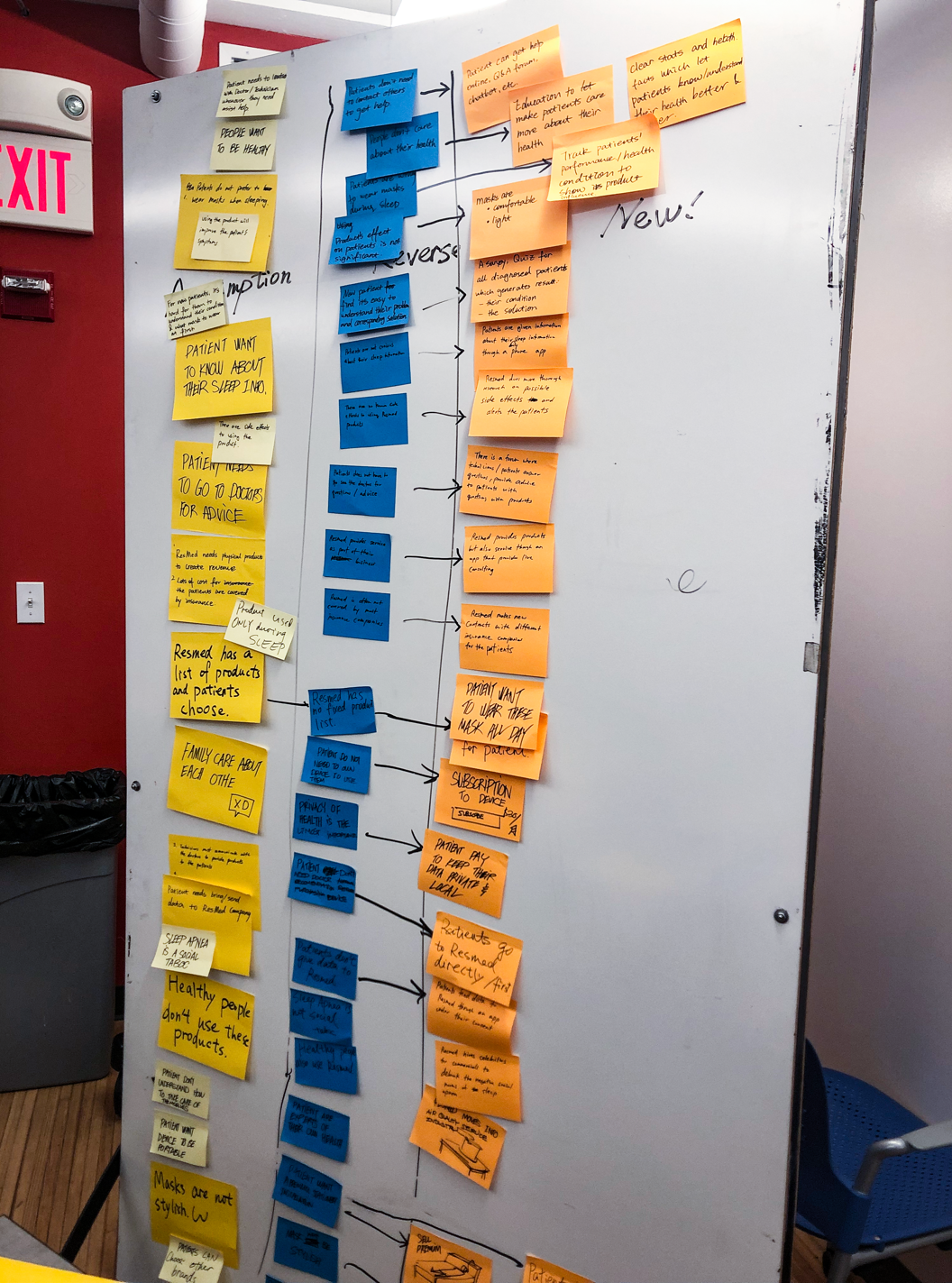Project Brief and Context
4 Weeks
Supawat Vitoorapakorn (Design + HCI)
Claire Sun (HCI + BXA)
Fenyi Zhang (HCI + Cognitive Science)
JY Park (HCI + IS)
As part of the Interaction Design II course in HCI, we were asked to help transition a traditionally product oriented company into a service oriented company via designing a mobile app. The company assigned to our team is ResMed, a company that provides breathing solution to patients.
Mission
The purpose of this design solution is to help our client, ResMed, to achieve their primary mission: to change 20 million lives who are influenced by Sleep Apnea by 2020. ResMed is a product-driven company which makes equipment and connected health solutions that give those with sleep apnea, COPD and other respiratory diseases the gift of breathe.
Our Approach
Our end-goal is to help our client increase their net profit and brand awareness. We first looked at the current ecosystem of healthcare and found most stages of the market are mostly saturated. For example, we have seen apps developed for face timing doctors, finding online doctors, holding sleep laps, personalized sleep masks. These are touched by ResMed as well as its competitors. Therefore, we needed to discover a new market, which we called: the prediagnosis.
Our Solution
Process
Stakeholder Mapping
Through secondary research and conversation with ResMed, we found that one of the main goals is to raise people's awareness of Sleep Apnea and to diagnose more patients. To first understand ResMed structure, we first drew out a stakeholder map to define the value interchanging between them.
Quantitative Data
Generative Methods
To find problems that we want to solve, we put down all of our assumptions of ResMed, the reverse of these assumptions, and new solutions for these reversed assumptions.

50 assumptions about healthcare and its reversal

Questioning the idea that patients needs doctors to determine their sleep problem.
Concepts Explored
Lower Diagnostic Barrier
We role played this and realized that although it lowers the bar of diagnosis, this intervention doesn't really address the stigma of signing up for a session in the sleep lab. Additionally, there already a plethora of sleep tracking apps out there and ResMed even owns one of them. From here, we re-shift our focus towards the hands off experience after diagnosis.
Enhancing the Hands-Off Experience
After creating a sequence model and a wireframe, we realized that this domain of locating "certified sleep labs" is already captured by Google Maps. We were stuck.
Sleep Tracking Experience for Children
After getting stuck, I placed ResMed's current product and service offering on the continuum of a connected healthcare ecosystem to gain a better understanding. Looking at it from this perspective, the only area that hasn't been captured is the "Healthy Living" aspect of sleep apnea.
Considering all member's in the family, I realized that kids made up a big part of the family and realized that our whole stakeholder diagram was focused on adults.
Harvesting Data
We realized that the surplus data that we can collect from the app and the users could be a significant asset to ResMed. From the users through the application, ResMed can gather various sleep data such as sleep patterns, sleep duration, or breathing patterns. Moreover, ResMed can also analyze app data such as session duration and frequencies for different app screens. For instance, if a user spends more time or visits a certain screen more than others, it suggests that the contents on that screen is interesting or concerning to the user.
Analyzing and studying the rich data from the users, ResMed can find correlations between sleep apnea and various factors. For instance, with the user’s height and weight information, ResMed can determine if a user’s BMI has an impact on sleep apnea. Using the general locations of the users, ResMed can also determine if air pollutions and environmental factors affect sleep apnea. These studies and researches from data provides a gateway to develop new products that may prevent or improve sleep apnea conditions for the users.
Data can also be used to establish a stronger connection between ResMed and its users. Under the user’s consent, ResMed can use the data to study the user, such as what they are interested in and which conditions they are concerned about. Using this information, ResMed can customize what the users will see on the application and also apply this with other methods of communication with the users.
Design
Wireframing
Low fidelity prototype and high fidelity visual design prototype.
Micro-Interactions
Setup Experience
Live Tracking Experience